On a recent August evening, my writing friend Carol and I hurried into Paulina Springs Books in Sisters, Oregon. We were there to attend a writing workshop by author and poet Joe Wilkins. Earlier that day I had looked through his website and noticed he had grown up in Montana. Then, I was even more eager to go to the workshop, just to be in proximity of a fellow Montanan. The workshop was titled “Layers of Landscape: Harnessing the Power of Place.” To say we were intrigued by the title was an understatement.
I’ve been scribbling away about the landscape for years. The landscape is one of the most important realms of my life. Safely curled inside my self-woven cocoon of what landscape is, I was in for a shock. Joe Wilkins, tall, bearded with collar length brown hair swept back, a short sleeved western pearl snapped shirt coupled with shorts and a strong, quiet presence stood at the end of two long tables pushed together. Throughout the evening he presented us with four ways landscape can be used to “understand and harness the power of place.” My cocoon unraveled. It dropped away. I felt raw and exposed as I considered ways I had not contemplated landscape before and the learning curve of writing about it in new manners.
The four ways are: mythological landscape, historical/socio-political landscape, ecological landscape, and metaphorical landscape. A constant companion to these aspects, like the undercurrent of a river, is the embodied landscape. Embodied landscape is where my writing roots lie. This is the landscape we feel through all our senses. This is the landscape I write about. I use my love for words to give the landscape a potent description, and on I go. Now I am going to have to slow down and dig in deeper.
Joe Wilkins said, “Place is the most important element of writing.” I have to agree. Now there are four new-to-me ways to explore and begin to integrate into my stories of the land. The process is going to take me some time, and it is going to take some study and research, and it will probably result in many wadded up pieces of paper flung at and into the garbage can in my writing room. The ways feel daunting. At the same time, they lend me vibrancy and the desire to explore these additional ways to consider the landscape.
At the workshop, there were around 25 people. Two men, and the balance women of all ages. To introduce ourselves, Joe Wilkins asked that we say our name, one by one. Then each of us was to note our primal place. This was, as I took it to mean, our home ground. Not necessarily where we had been born, though it could be, but the place we would always be rooted in, no matter where else we went on earth during our lives. He then asked we say our chosen place. This is the place where we have chosen to live, currently in our lives. Or will choose to live. Introducing ourselves this way proved to be fun and revealing of one another.
There is no question of my primal place. It is the Bear Paw Mountains of north central Montana. The Bear Paws, as those who live there call them, also happen to be where I was born and raised. I lived in and with them until my mid twenties. Every day, I thank my lucky stars for the fortune to grow up in their embrace. My thankfulness includes my parents and sister, and our cattle ranch who are all encompassed in my Primal Place. I would not change one moment of those years.
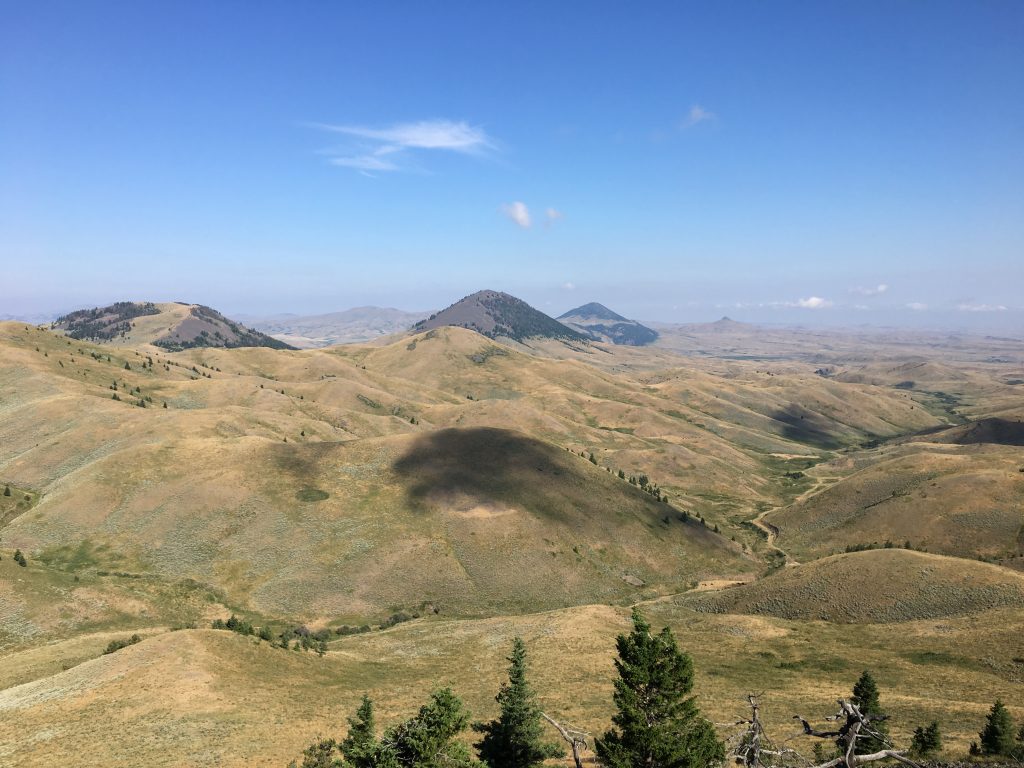
The Bear Paws are a series of ancient buttes, mostly grass covered with patches of timber. Small, crystal springs and creeks are everywhere. The mountains are chock full of life. Deer, nowadays elk who have moved back in, coyotes, bobcats, occasionally cougars, birds of many kinds, the strong, strong native grasses, aspen, willow, dogwood, wild rose, hawthorne, chokecherry, serviceberry, and soaring over all, hawks and golden eagles. There are more than I can mention here. The Bear Paws rear strong life of all kinds.
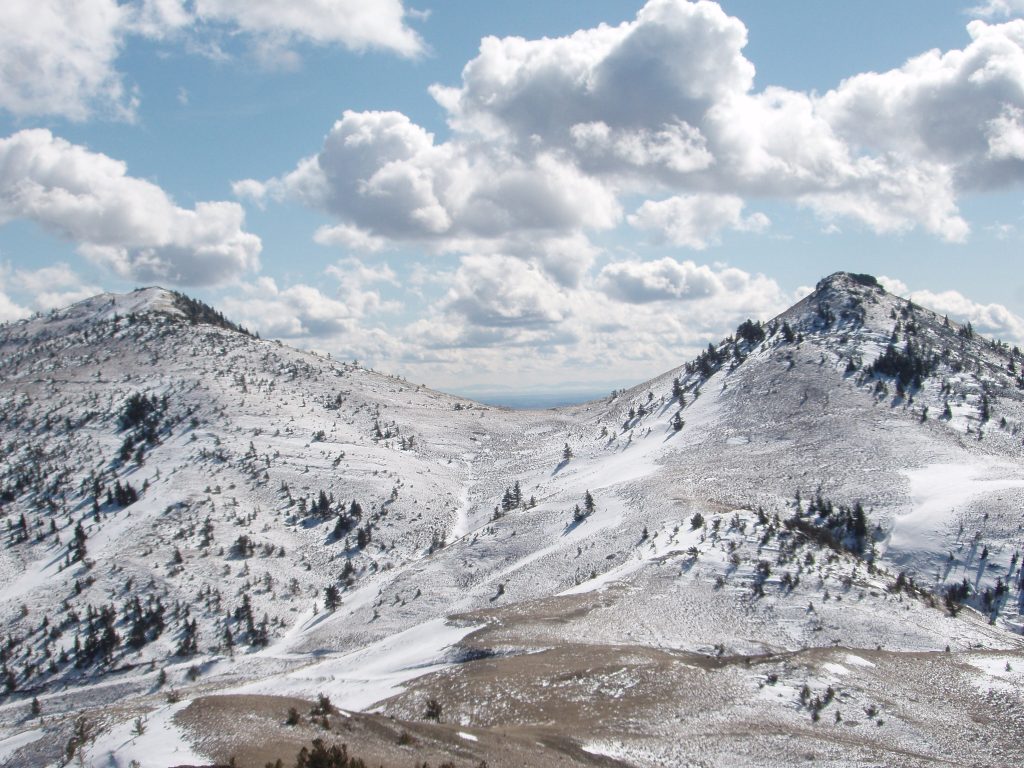
The Bear Paws illuminated life for me. Their geography taught me how to move. Their ever-shifting weather taught me change is constant in life, flexibility paramount to get by. Their clear waters taught me I’d not find water of their equal anywhere else. I learned physical strength from moving amongst them in all seasons and weathers. Emotional strength came from the implacable nature of them, as I gazed at a new born calf frozen in the snow, his contorted red and white body frosty, his life snatched by a blizzard and frigid temperatures. Spiritual strength arose from the connection with the land the mountains give to those who respect them and who respect nature. This is a Way you have to find alone.
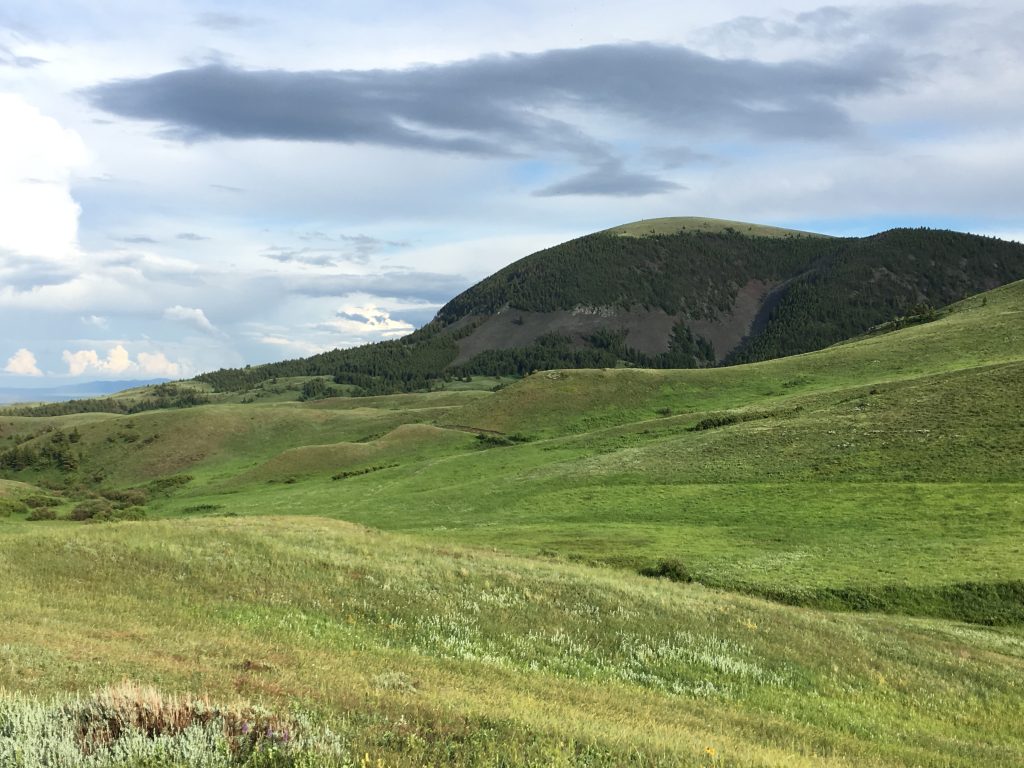
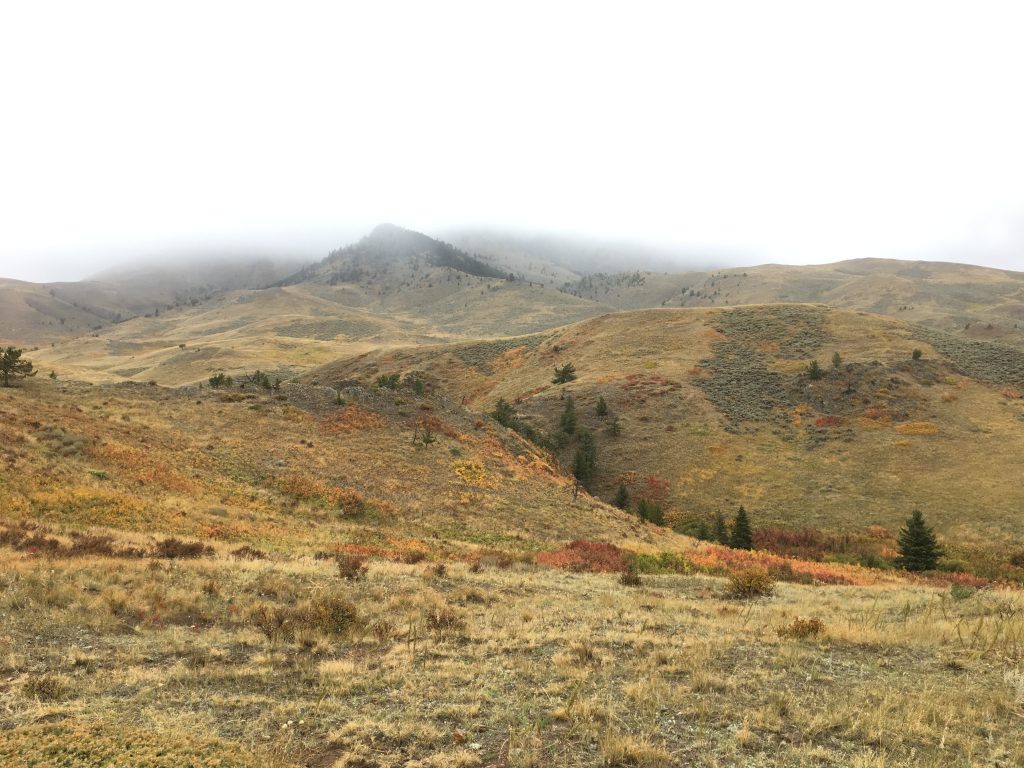
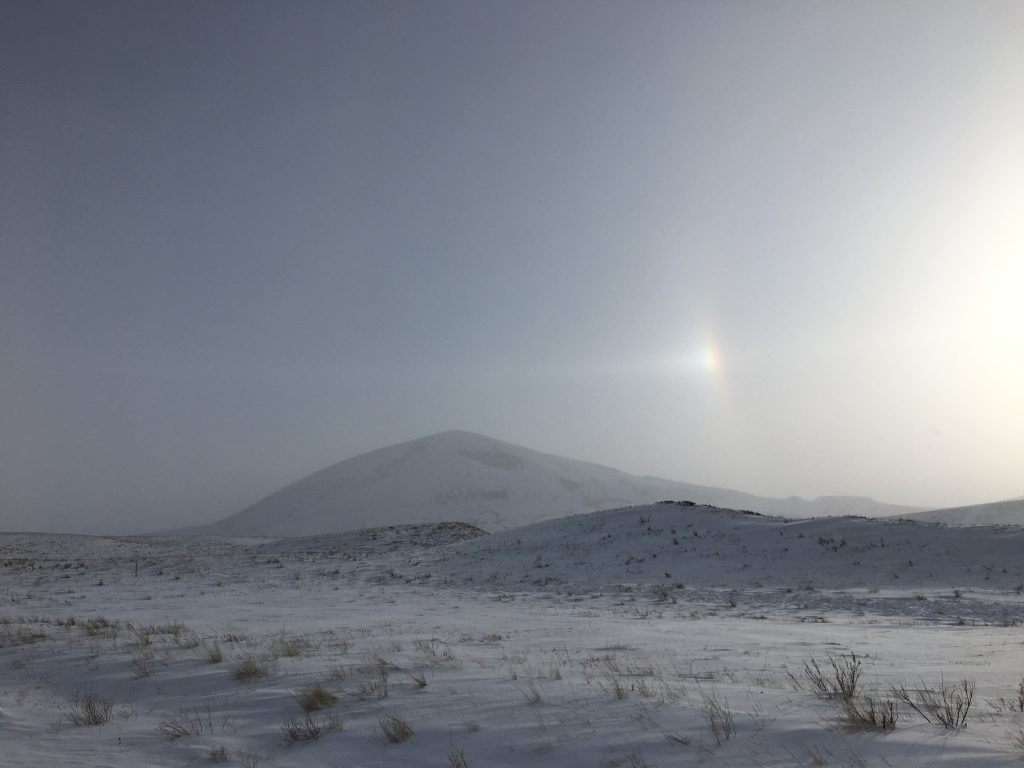
Information about the Bear Paws is easy to find on the internet. The information is common and no reflection of who they are. If you look, you might notice they are called Bears Paw Mountains. No one I know who lives among them calls them “Bears Paw”. Non-natives call them by this formal name. They are the Bear Paws, and for me they will always remain so. Like the undercurrent of embodied landscape that runs under the four ways to write about landscape I learned about in the workshop, the Bear Paws are my shadow heart that beats in ghostly concert with my physical heart.
The final part of our introduction, the chosen place, gave me pause. Then I realized it has not appeared yet for me. A big part of my life to look forward to. I have no inkling of what or where it may be.
Afterwards, when I thanked Joe Wilkins for the evening, I mentioned I, too, was from Montana. He was somewhat surprised. I marveled to myself how two Montanans from rather obscure areas of the state had crossed paths in a bookstore in Oregon.
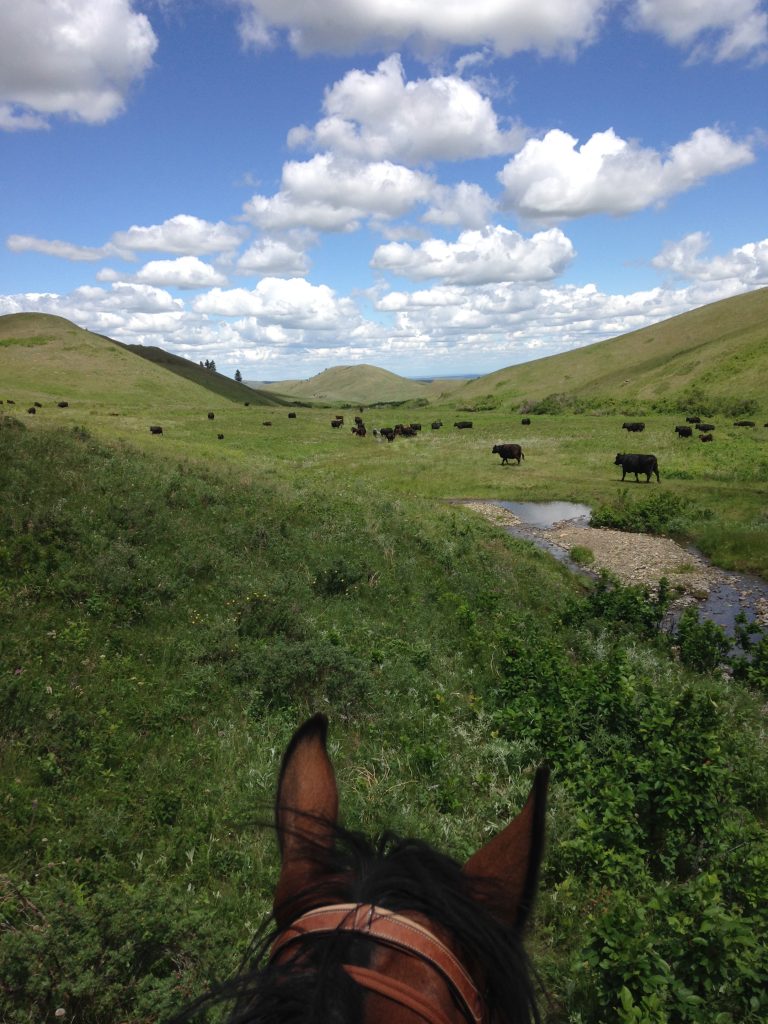
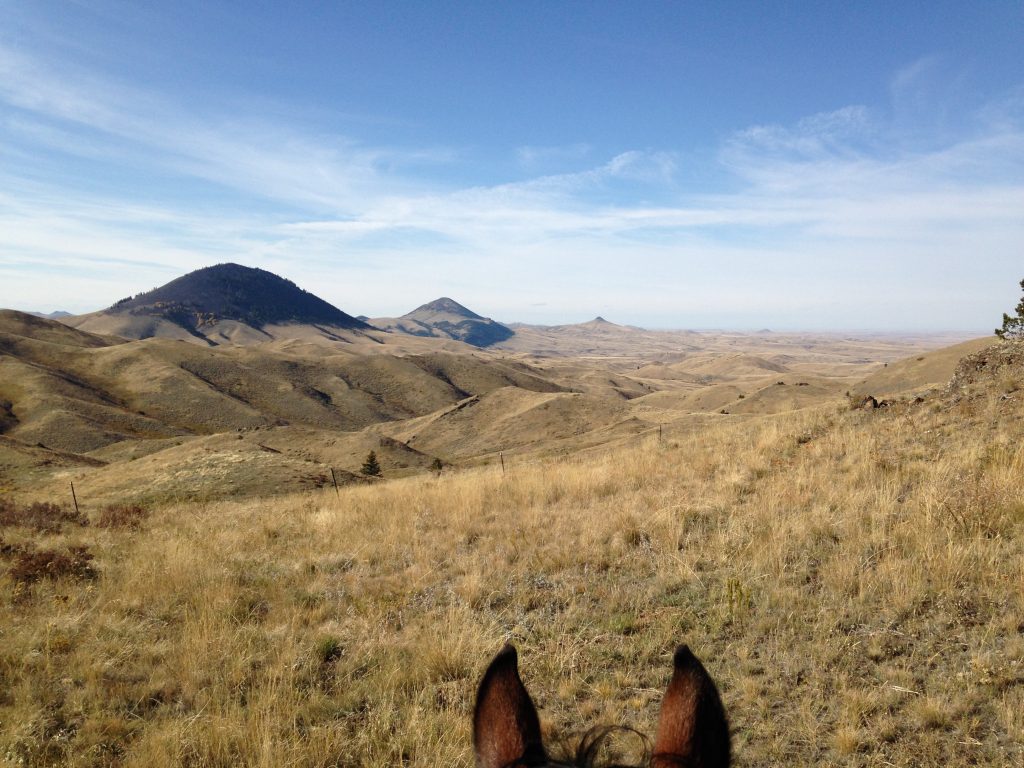
The writing workshop was hosted by Paulina Springs Books in collaboration with Pine Meadow Ranch. Sisters, Oregon gets crazy busy with tourists during the summer months, but when the season wanes I plan to spend hours browsing Paulina Springs Books. The store is full to the brim of intriguing books and book related items, like these bookmarks from Little Gold Fox Designs. My stack of books will grow to resemble the Leaning Tower of Pisa, I know, despite my best intentions to “behave.” Who ever considers behaving in a bookstore?

All photos ©Jenny Wright
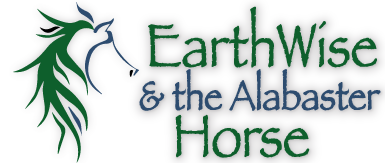
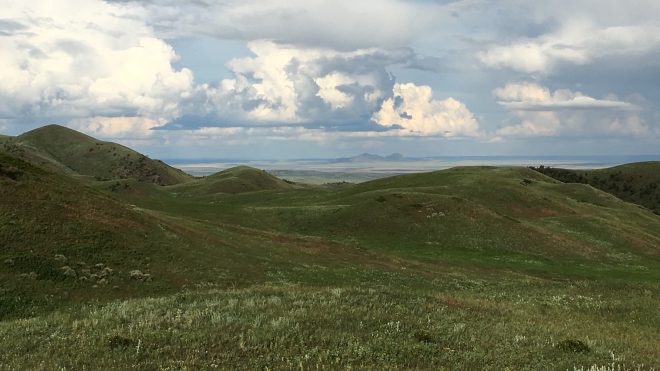
What a fabulous opportunity the workshop has afforded you, Jenny. And what a joy for us, your readers, to share in the excitement through your writing and photographs. You take us to your primal place with such ease and fluidity. Thank you, and I look forward to your next piece, once you’ve had chance to explore the four new ways of looking at something so dear to you. So primal.
Thank you, Sara. Writing about the landscape incorporating the new ways to describe it will be a learning curve! I expect it will take some time, but I will begin working them in.
Oh my gosh, Jenny. Beautiful, absolutely beautiful. Your words shared your undercurrent of embodied landscape to me through a connection I could feel in my chest. You’re writing is growing. Your art shared through words is incredible. Thank you for sharing your heart and soul. It fills mine.
Paige, thank you straight from my heart for your words. I love how you can feel the connection, and it makes mine stronger❤️
Oh my gosh, Jenny. Beautiful, absolutely beautiful. Your words shared your undercurrent of embodied landscape to me through a connection I could feel in my chest. You’re writing is growing. Your art shared through words is incredible. Thank you for sharing your heart and soul. It fills mine.